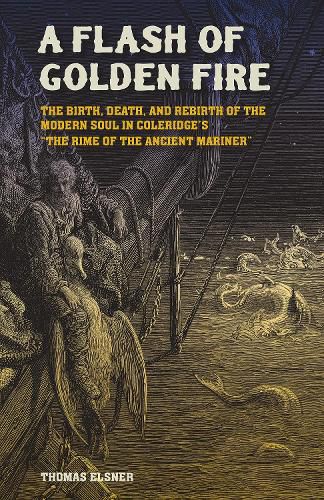Readings Newsletter
Become a Readings Member to make your shopping experience even easier.
Sign in or sign up for free!
You’re not far away from qualifying for FREE standard shipping within Australia
You’ve qualified for FREE standard shipping within Australia
The cart is loading…






In the early twentieth century C. G. Jung survived an intense encounter with the unconscious. He did this by giving expression to his inner world in the paintings and dialogues found in the Red Book. Yet Jung felt alone in this work, unable to find a precedent or cultural parallel, until he discovered alchemy. This ancient "protoscience" became the bridge Jung had been seeking between the remote past and the present. Yet between the downfall of alchemy in the eighteenth century and Jung's Red Book in the twentieth, it seems that there was a gap in the tradition. According to Jungian analyst and author Thomas Elsner, Samuel Taylor Coleridge's great visionary poem "The Rime of the Ancient Mariner" is another link in that golden chain. In Elsner's analysis, Coleridge's nineteenth century night-sea journey can today be understood as a symbolic self-portrait of the collective unconscious, a self-portrait that, like the Red Book, finds its historical context and continuity in the alchemical tradition.
Continuing the highly esteemed works arising from the Fay Lecture Series, sponsored by the Jung Center, Houston, Elsner's A Flash of Golden Fire: The Birth, Death, and Rebirth of the Modern Soul in Coleridge's "The Rime of the Ancient Mariner" promises to further extend the understanding and appreciation of Jungian principles for practitioners, analysts, others interested in Jungian theory and practice, the psychological dimensions of Romantic poetry, and the evolution of Western consciousness.
$9.00 standard shipping within Australia
FREE standard shipping within Australia for orders over $100.00
Express & International shipping calculated at checkout
In the early twentieth century C. G. Jung survived an intense encounter with the unconscious. He did this by giving expression to his inner world in the paintings and dialogues found in the Red Book. Yet Jung felt alone in this work, unable to find a precedent or cultural parallel, until he discovered alchemy. This ancient "protoscience" became the bridge Jung had been seeking between the remote past and the present. Yet between the downfall of alchemy in the eighteenth century and Jung's Red Book in the twentieth, it seems that there was a gap in the tradition. According to Jungian analyst and author Thomas Elsner, Samuel Taylor Coleridge's great visionary poem "The Rime of the Ancient Mariner" is another link in that golden chain. In Elsner's analysis, Coleridge's nineteenth century night-sea journey can today be understood as a symbolic self-portrait of the collective unconscious, a self-portrait that, like the Red Book, finds its historical context and continuity in the alchemical tradition.
Continuing the highly esteemed works arising from the Fay Lecture Series, sponsored by the Jung Center, Houston, Elsner's A Flash of Golden Fire: The Birth, Death, and Rebirth of the Modern Soul in Coleridge's "The Rime of the Ancient Mariner" promises to further extend the understanding and appreciation of Jungian principles for practitioners, analysts, others interested in Jungian theory and practice, the psychological dimensions of Romantic poetry, and the evolution of Western consciousness.